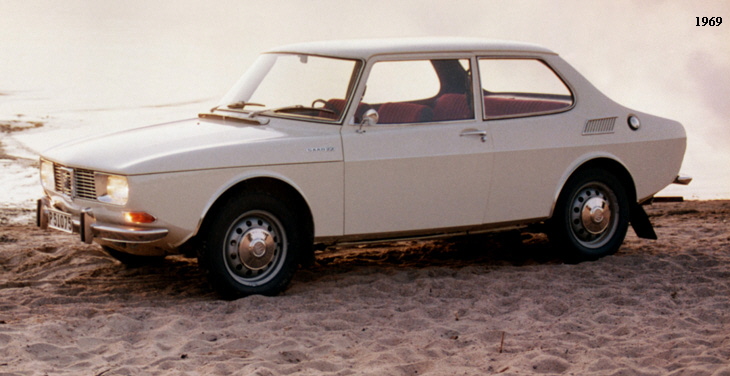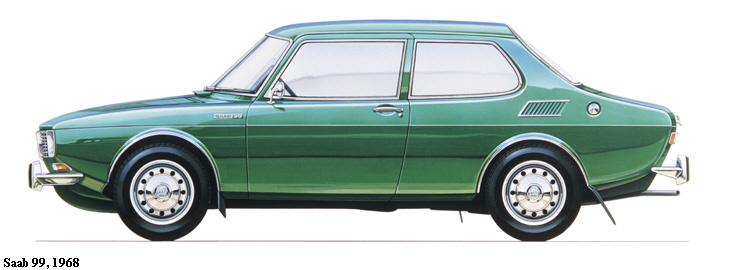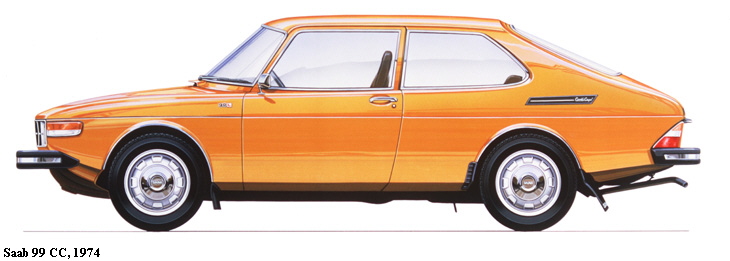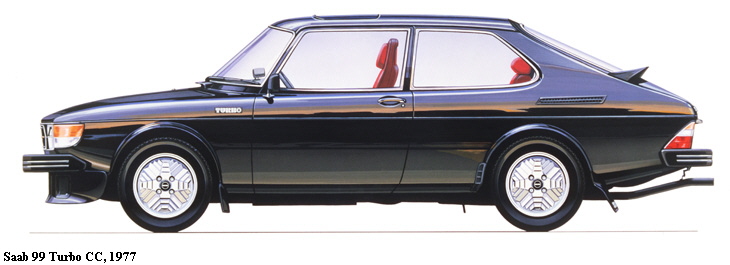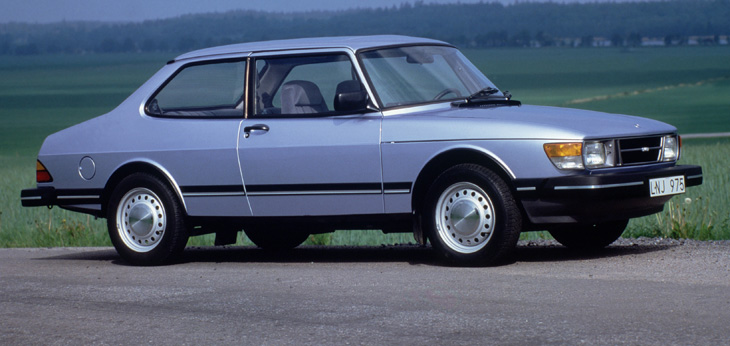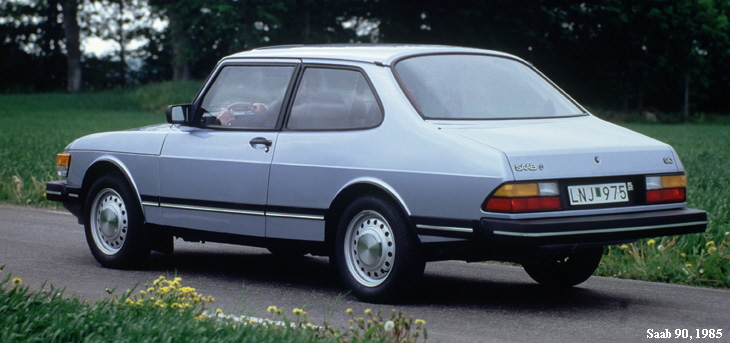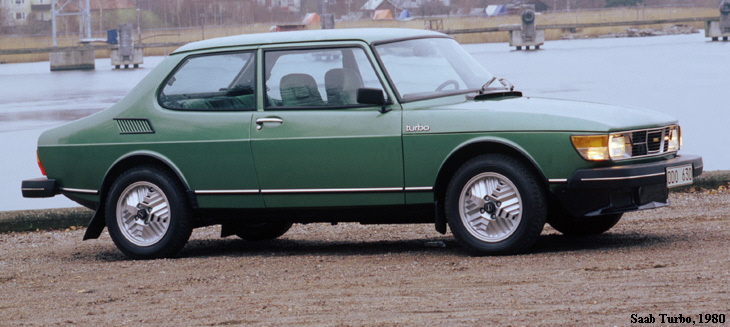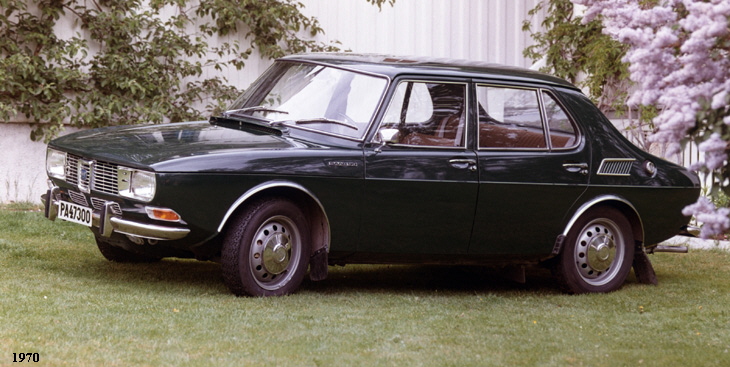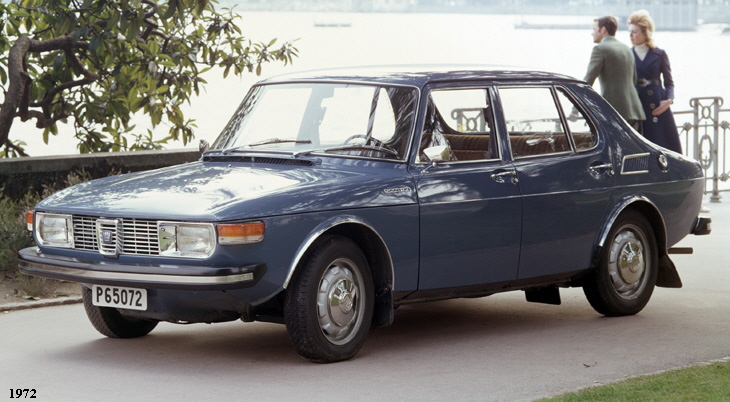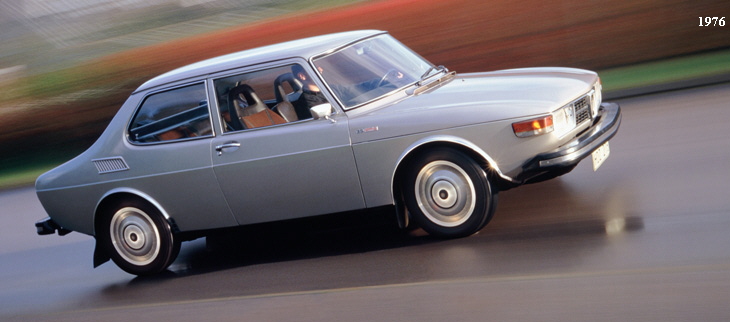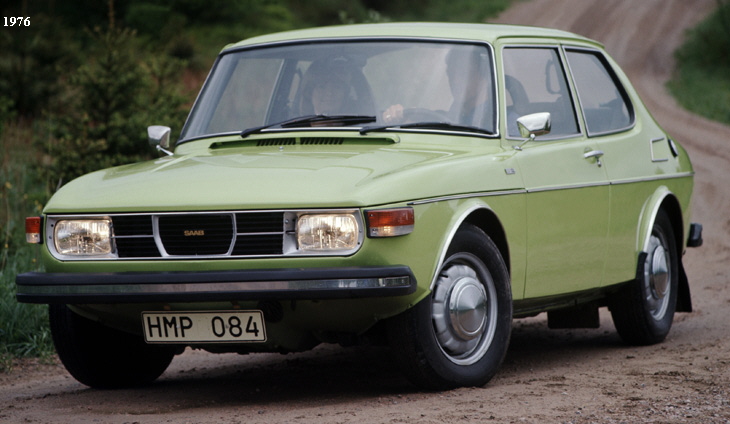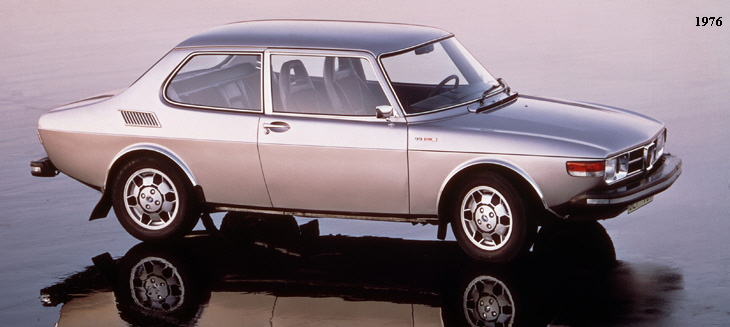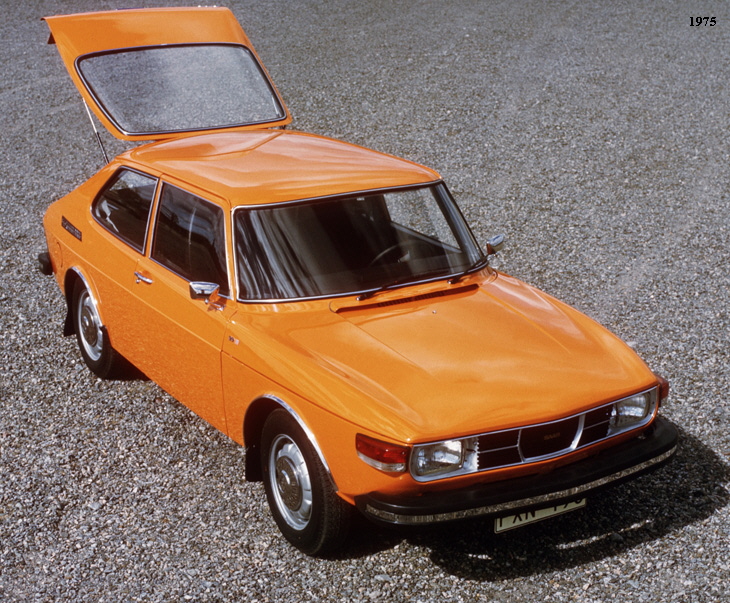|
|
|
|
1968-1987 Saab 99/90 Saab moved upmarket in 1968 with the introduction of the all-new Saab 99, a second and much larger model line. Designed by Sixten Sason and his assistant Bjorn Envall, the 99 was a long running success that evolved 10 years later into the 'classic' 900 series. The 99's curved windscreen and front-hinged, 'clamshell' hood quickly became distinguishing 'Saab' design motifs. Inside, the most innovative feature was the central location of the ignition switch/key down between the front seats alongside the gear lever. For additional security, it included a reverse gear lock. This unique ignition switch location - good for occupant crash protection and sound ergonomics - remains a distinctive feature of current Saab models. Initially launched as a spacious 2-door sedan, 4-door and 3/5-door variants quickly followed, the latter founding Saab's reputation for designing sporty looking, hatchback cars with a versatile, load-carrying capability. Front and rear 'crumple' zones for crash protection were part of the 99'structural design A modern family of engines, sourced from Standard Triumph, was also introduced. The first 1.7-liter crossflow unit had an overhead camshaft and an aluminum cylinder head. It was installed longitudinally, with the gearbox underneath, and canted over at 45º in order to allow a low hood line. The chassis featured disc brakes all-round, double wishbone front suspension and a solid rear axle located by trailing arms and a Panhard rod. Front-wheel drive was, of course, retained. A series of safety and technical innovations (see below) followed during the 99's long production run. However, it is most notable for ushering in the Saab turbo era. First produced in 1977, the 145 bhp Saab 99 Turbo, in black with 'Inca' alloy wheels, was to become a motoring icon for Saab, delivering vivid acceleration and establishing the brand as a leader in the use of turbocharging for production cars. By this time, the engines had also been enlarged to 1.85 and 2.0-liters and fuel injection added to the sportiest versions. The Saab 90 replaced the 99 in 1984 and was primarily produced for the Scandinavian market. It retained the 99's frontal styling but added the rear body section from the 900 model, giving more passenger and luggage space. A total of 588,643 Saab 99s and 25,378 Saab 90s were produced. Innovative features:
|
|
|
|
|
